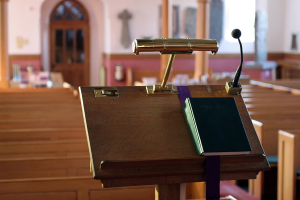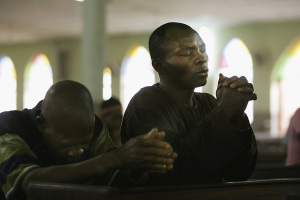'Killing Jesus' Director Talks 'Muscular' Messiah and 'Ethnic Look' of National Geographic Channel Movie
OUARZAZATE, MOROCCO — The director of National Geographic Channel's upcoming "Killing Jesus" movie says audiences will not be getting the standard issue "wimpy" Jesus, but instead a "muscular" messiah who is every bit as human as the people who made him famous.

"We wanted to go for a muscular Jesus, someone who was in a way a sort of a rock star in his time," director Chris Menaul told The Christian Post in October during a visit to the set of "Killing Jesus" in the rocky plains of Ouarzazate, a city dubbed the "Hollywood of Morocco."
Menaul, known for Fatherland and The Passion of Ayn Rand, noted that news of Jesus' miracles traveled word of mouth, and that every time he entered a village "it was a huge event."
He used the shooting of Jesus' Triumphal Entry as an example, saying he was "very pleased with the entry into Jerusalem on Palm Sunday when he went on the donkey colt to fulfill the prophecy" recorded in the Old Testament Book of Zechariah.
"That's what we've gone for, a muscular Jesus with a lot of energy," Menaul added.
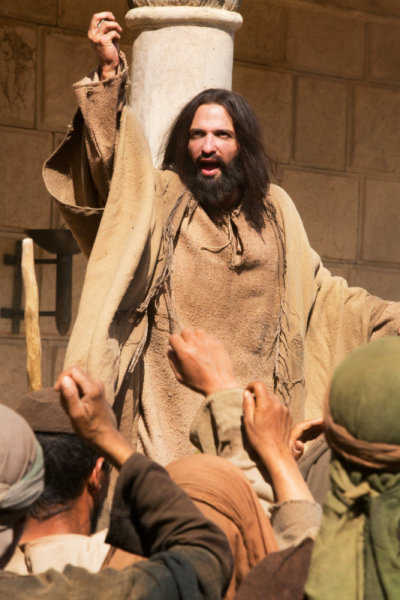
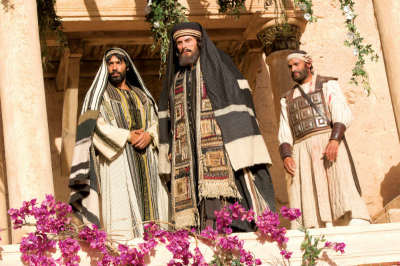
The first century Jewish carpenter and itinerant preacher (played by Lebanese actor Haaz Sleiman) does come across as bold, defiant and very much in-your-face, especially when it comes to interaction with chief antagonist and Jewish high priest Caiaphas (Rufus Sewell).
In one particular scene observed by CP during filming in Morocco, Sleiman's Jesus enters the very busy marketplace that the Temple's Court of the Gentiles has become under Caiaphas' tenure. He loosens pen latches and lets animals go free, with wingman Simon Peter (Alexis Rodney) and another disciple knocking back herdsmen from getting in Jesus' way. Jesus then turns over a table or two and stands atop one belonging to a money changer. He grabs a fistsful of coins and says while giving a watching Caiaphas the evil eye, "My house shall be a house of prayer, but you have made it a den of thieves." The two maintain eye contact — Jesus' seemingly saying with his eyes, "Bring it," and a tight-jawed Caiaphas squinting at the rabble-rouser as if he were staring down an annoying ant. Temple guards try to arrest Jesus, but his followers hold them off, until Jesus makes his exit.
This production of "Killing Jesus" is based on the 2013 bestselling book of the same name by Fox News' Bill O'Reilly and Martin Dugar. The book is third in a series of historical accounts of pivotal figures that includes Killing Kennedy and Killing Lincoln. National Geographic adapted those first two books into television dramas as well, which proved a boon for the network. Undoubtedly, hopes are high for "Killing Jesus."
Who Do They Say That I Am?
O'Reilly, a Roman Catholic, has said in interviews that he and Dugar's presentation of Jesus is a purely historical one, a disappointment for some readers, like popular Christian blogger and book reviewer Tim Challies.
Challies' Amazon review of Killing Jesus was listed as "the most helpful critical review" out of the thousands submitted by readers. Challies insists in his review that Killing Jesus "is not a bad book as much as it is an incomplete book." The blogger and author faults O'Reilly and Dugard for focusing purely on the historical perspectives and neglecting to address the "spiritual significance ... (of) the life and death of Jesus Christ."
The matter of Jesus' divinity is up for interpretation in the National Geographic Channel production as well, so viewers are left to make that call on their own. Jesus himself is shown experiencing moments of doubt, at one turn asking his disciples who they and the people think he is. This is what makes Jesus human, according to Menaul.
"I hope we've kept that element of doubt, because otherwise he's not human," he explained. "'Well am I what they think I am? I'm increasingly coming to believe I am.' So I hope a Christian audience will relate to that because it's very human."
Jesus' miracles are also left to viewer interpretation. In one scene, Menaul told CP, "We see him cure a child who is kind of extremely ill and is fitting and frothing at the mouth."
Jesus sympathizes with the child and holds him and consoles him. The boy comes out of his episode and calms down. Was it an epileptic fit that the boy just happened to get over? Or was it a miracle, as some in the crowd watching the interaction believe?
"Maybe it was, maybe it wasn't," said Menaul, adding that "the miracles you see in this are ones that could be luck..."
"We don't have Christ walking on water. We don't have him raising petrifying bodies from the dead. We don't go down that road," the director added. "But I hope we show how his kind of charisma, if you like, and his ability to heal people and to connect with them became by word of mouth magnified..."
Menaul was well aware that National Geographic's approach is "unusual in films about Jesus. Letting them, the audience decide."
That should not, however, keep viewers who believe that Jesus is savior and the Son of God from relating to Sleiman's character, Menaul hopes.
"Well I hope they'll like it," he said. "I hope they'll relate to it just as non-Christians will, because it's a very sympathetic portrayal of Jesus. He comes over as a very believable man, and a man who doesn't start off thinking he's the Son of God, but who comes to believe that he must be, and partly because of the way other people react to him."
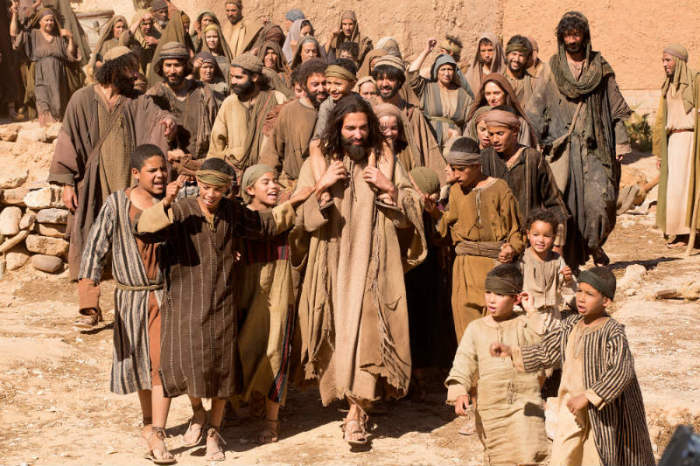
'A Very Ethnic Look'
Another important element in "Killing Jesus" was putting forth a believable historical setting. That means Jesus, an observant 1st century Jew living under Roman occupation, is actually a Middle Eastern man, à la Sleiman. Other popular productions about Jesus Christ often feature white European or American actors in the title role. In "Killing Jesus," his disciples are an ethnic mix as well, and Moroccan extras play crowd scenes.
Menaul said he went "for a very ethnic look to try and create an eastern Mediterranean Levantine country 2,000 years ago as it might have been without sort of blue eyed, blonde American or British actors you know plunked into the middle of this sort of setting which always looks kind of phony even in films which are otherwise quite good I think."
"So we've gone for that, we've gone for a country which was very poverty-stricken. Obviously there are other scenes of great opulence, within the temple, within Caiaphas' palace, within the Roman imperial governor's house and within the royal family of Palestine at that time which I'm sure you know is Herod and Herod's son Antipas. So you've got a wide sort of palette I hope...," he added.
Another vital element for the Son of Man who the Gospels say told a would-be follower that he had "no place to lay his head" was to make the rabbi and his followers look like common Jews of Judea.
"We went for very shabby clothes for the disciples and for the people they mingled among," Menaul explained. "Again, you quite often see it sanitized in sort of clean robes and everything. So these are poor people. Of course with Jesus and the disciples they were effectively vagrants, they were tramps because they moved from town to town and village to village, they lived on charity, they had to carry a lot of what they needed with them." He added that it was not until Matthew, the presumed wealthy tax collector, joined them that Jesus and his disciples got "hooves," or a donkey.
Watch a clip of "Killing Jesus" in the video player, featuring Sleiman's delivery of the "Sermon on the Mount:"
"Killing Jesus" also stars Kelsey Grammer ("Partners," "Boss") as King Herod the Great, Stephen Moyer ("True Blood") as Pontius Pilate, John Rhys Davies ("Indiana Jones") as Annas, and several other notable actors.
The movie was produced by Scott Free Productions, with Scott Free, Ridley Scott, David W. Zucker and Mary Lisio serving as executive producers along with O'Reilly and Teri Weinberg. For National Geographic Channel, executive producers include Charlie Parsons and Heather Moran. Tim Pastore is NGC president of original programming and production.
"Killing Jesus," presented as a "three-hour television event," airs Palm Sunday, March 29 at 8 p.m. ET in the U.S., and will be accessible to viewers in 171 countries and in 45 languages. "Killing Jesus" will also air in Spanish on Nat Geo Mundo. Learn more about the program: killingjesus.nationalgeographic.com.
















